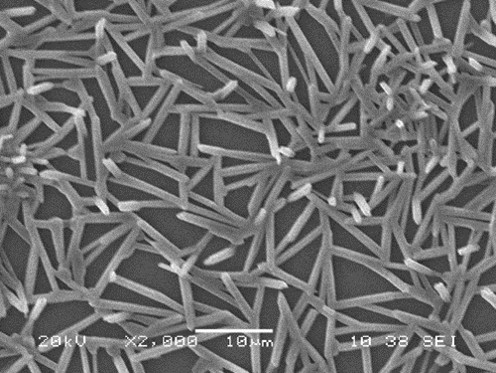The goal of this project is to synthesize one-dimensional (1D) oxide nanostructures using chemical vapor deposition (CVD) and study their plasmonic properties for plasmon enhanced photocatalytic applications.
Research Mentors
Haitao Zhang (Mechanical Engineering and Engineering Science)
Description
Metalloids are a group of elemental materials with properties in between those of metals and nonmetals, including B, Si, Ge, As, Te, and At, etc. While various nanostructures of B, Si, and Ge have been intensively studied with synthesis, property measurement and device testing, the nanostructures of other metalloids have not been thoroughly investigated. We are interested in the nanostructures of Te (tellurium). Te is a p-type semiconductor with a narrow band gap, which can be tuned with dimension control. It has special electrical and optical properties, such as photoconductivity, non-linear optical property, high carrier mobility, thermoelectricity, and piezoelectricity, etc. This talk is focused on the development of low-dimensional structures of Te, from microrods, nanowires, to nanoplates using a vapor-based synthesis method. Growth mechanism study is performed to explore the parameter effects on the growth control of dimensions and morphologies. Structure characterization and photoconductivity property measurement are also performed.
Figure 1. Tellurium nanowire network synthesized using CVD method.
REU Student’s Role
Students will learn and carry out the CVD growth exploring different growth parameters to realize the growth of synthesis of Te nanostructures. The resulting depositions will be characterized using scanning electron microscopy, X-ray diffraction, and energy-dispersive X-ray spectroscopy, etc., for structural and compositional information such as morphology, crystalline structure, and stoichiometry. Device fabrications and photoconductivity measurement will be performed.

